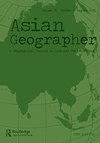Investigating film-induced tourism potential: The influence of Korean TV dramas on Hong Kong young adults
IF 2.2
Q2 GEOGRAPHY
引用次数: 19
Abstract
ABSTRACT More and more tourism destinations have begun to utilize the increasing influence of Asian pop entertainment media, in an attempt to diversify their products and tourists’ experiences. This paper investigates Korean TV dramas as the determinant of film-induced tourism using a survey of a sample of Hong Kong young adults (n = 220). The study confirms a moderate correlation between the characteristics of Korean TV drama and the behavioral intention to travel to these film destinations. The results show a moderate level of interest and a small potential market among the respondents only, which is not sufficiently strong according to the relatively low ratings, and the respondents show less inclination to realize their motivations to be a “travel action.” Two motivational factors are identified, namely inner conception and outer attributes, to mobilize the respondents to film-induced travel. Specifically, the respondents consider character fantasy, relaxation and romance, and vicarious experience as the strongest determinants in inducing more travel to film destinations in Korea. More respondents perceive themselves to be general or serendipitous film tourists, who regard filming site visitation to only constitute one part of their entire trip’s activities and travel experiences, and novelty and prestige as the main motivators. A relatively small group of specific film tourists focus on vicarious experiences, along with the romantic feelings of film characters and scenes. These results provide film destination planners and marketers with useful information about product and experience diversification, as well as an opportunity for market segmentation.电影旅游潜力调查:韩国电视剧对香港年轻人的影响
越来越多的旅游目的地开始利用亚洲流行娱乐媒体日益增长的影响力,试图使其产品和游客体验多样化。本文以香港青年(n = 220)。该研究证实,韩国电视剧的特点与前往这些电影目的地的行为意向之间存在适度的相关性。结果显示,受访者的兴趣水平适中,潜在市场较小,根据相对较低的评分,这一点还不够强烈,而且受访者不太愿意意识到自己的“旅行行为”动机,动员受访者进行电影旅游。具体而言,受访者认为角色幻想、放松和浪漫以及替代体验是吸引更多人前往韩国电影目的地的最有力决定因素。更多的受访者认为自己是普通或偶然的电影游客,他们认为拍摄现场参观只是他们整个旅行活动和旅行体验的一部分,而新奇和声望是主要的激励因素。一小群特定的电影游客专注于替代体验,以及电影人物和场景的浪漫情感。这些结果为电影目的地规划者和营销人员提供了有关产品和体验多样化的有用信息,以及市场细分的机会。
本文章由计算机程序翻译,如有差异,请以英文原文为准。
求助全文
约1分钟内获得全文
求助全文
来源期刊

Asian Geographer
GEOGRAPHY-
CiteScore
3.30
自引率
0.00%
发文量
7
期刊介绍:
Asian Geographer disseminates knowledge about geographical problems and issues focusing on Asia and the Pacific Rim. Papers dealing with other regions should have a linkage to Asia and the Pacific Rim. Original and timely articles dealing with any field of physical or human geographical inquiries and methodologies will be considered for publication. We welcome, for example, submissions on people-environment interactions, urban and regional development, transport and large infrastructure, migration, natural disasters and their management, environment and energy issues. While the focus of the journal is placed on original research articles, review papers as well as viewpoints and research notes under the category of “Asian Geography in Brief” are also considered. Review papers should critically and constructively analyse the current state of understanding on geographical and planning topics in Asia. The ‘Asian Geography in Brief’ section welcomes submissions of applied geographical and planning research about Asia. The section aims to showcase (1) the diverse geography and planning of Asia; and (2) the diverse geographical and planning research about Asia. The journal will also publish special issues on particular themes or areas. Book reviews can be included from time to time.
 求助内容:
求助内容: 应助结果提醒方式:
应助结果提醒方式:


